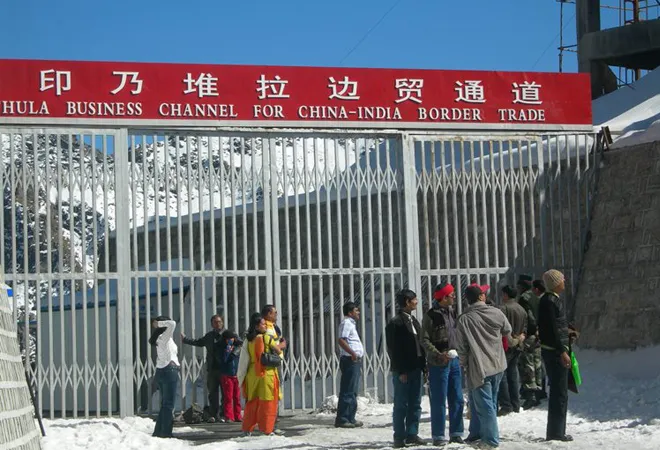-
CENTRES
Progammes & Centres
Location
Doklam is merely a symptom of a revanchist China that no longer sees the need to play by the book. India needs to change its strategy as well.

Since 1991, the impulse that shaped how India engages with the world — and especially China — has put its economic and developmental needs front and centre.
From this trade-friendly grand strategy flowed a prescription of interdependence, and a calculation that China would change its posture towards India in the long run. India has consciously de-linked progress on resolving its dispute at the border with China with convergence on global economic governance and market access.
As the Doklam standoff enters its second month, with no resolution in sight, it is clear that this grand strategy has been an abject failure. Not only has this strategy brought additional friction in ties — India’s trade deficit with China now stands at more than 46 billion dollars — it is now evident this orientation has led to a systemic degradation of India’s hard-power capabilities. Defence spending as a percentage of GDP is now at its lowest since 1962. A recent, much-discussed CAG report has noted that India’s ammunition stockpile can only support combat up to 10 days.
The issue at hand is not whether Doklam erupts into war. Doklam is merely a symptom of a revanchist China that no longer sees the need to play by the book. Co-opting such a power is impossible.
India needs a new grand strategy for it to help maintain a multipolar Asia and resist Chinese expansionism. This necessarily involves defining South Asia as India’s sphere of influence — any Chinese project of a unipolar Asia will be incomplete without South Asia in the Sinosphere.
For a nation that shares disputed borders with two nuclear-armed states, spending less than Saudi Arabia on its military is farcical. The defence-expenditure priority should be deep war-wastage reservoirs, and budgetary allocations for external intelligence services to significantly complicate Chinese plans to expand its footprint in South and Central Asia and Africa.
The new grand strategy should also include a diplomatic rethink.
There must be an effort to decouple the Indian and Chinese economies. From importing bulk drugs for its pharmaceutical industry to handing the Chinese keys to sensitive sectors such as telecommunications to — astonishingly enough — contracting PetroChina to ship oil India is buying from the US, the prescription of economic integration has strengthened China’s hand and weakened India’s. Cheap Chinese goods cannot come at the expense of national security.
India and China are both parties to the ongoing negotiations around the Regional Comprehensive Economic Cooperation (RCEP) — a mega free-trade agreement (FTA). India’s position in the RCEP negotiations should be, in equal parts, about restricting potential Chinese gains (not just vis-à-vis India) as it is about increasing its own. Any strong FTA between India and China is a non-starter; therefore New Delhi has very little to lose by diluting the RCEP or even adopting an obtrusive stance.
Almost exactly 70 years ago, American diplomat and scholar George Kennan wrote an essay that laid the foundations of the American grand strategy of containment. It kept Soviet power in check during the Cold War. Containment found its official expression in a 1950 memorandum of the US National Security Council — the NSC-68 — which would shape much of how the US would put containment into practice, militarily and diplomatically, until détente became an viable alternative in the 1970s.
The standoff in Doklam is New Delhi’s “NSC-68 moment”. It is time to make the containment of Chinese power the primary objective of India’s grand strategy.
This commentary originally appeared in The Print.
The views expressed above belong to the author(s). ORF research and analyses now available on Telegram! Click here to access our curated content — blogs, longforms and interviews.

Shachi Adyanthaya Portfolio Manager Childrens Investment Fund Foundation
Read More +